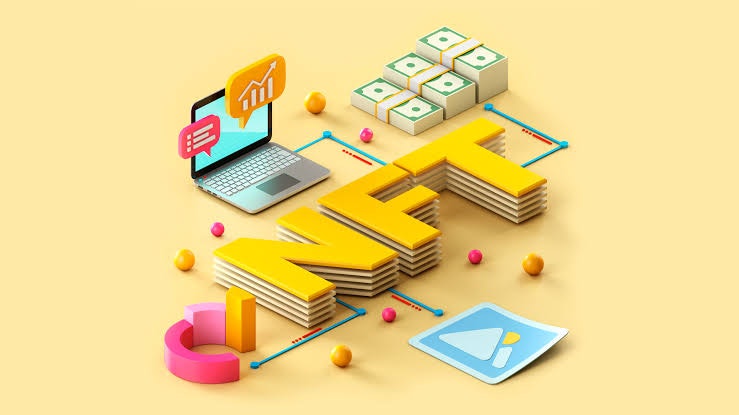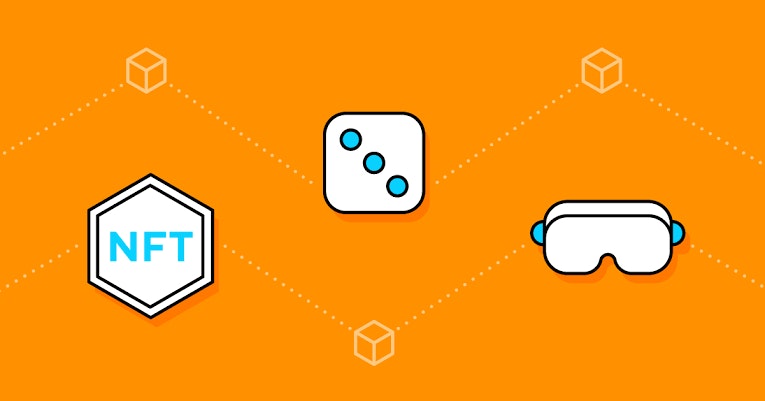A complete NFT glossary: NFT terminologies explained
28/04/2022

If you’re new to the world of NFTs, you may feel a little overwhelmed by all of the terminology being thrown around. Don’t worry – you’re not alone!
In this post, we’ll look at the most commonly used terms and explain them in easy-to-understand language. So whether you’re just starting out or you’re already an experienced NFT owner, read on for a comprehensive guide to all things NFT!
What are NFTs?

Before we dive right into some NFT terminology, let’s make sure the meaning of NFT is clear.
NFTs, or nonfungible tokens, are a type of crypto-assets. Unlike “traditional” cryptocurrencies, NFTs are “nonfungible,” which means that they are not interchangeable.
To understand this concept, think about regular money, like dollars. Each dollar has exactly the same value. If I borrow a dollar from you, I can later pay you back with another dollar. That’s because dollars are “fungible.” The same is true for cryptocurrencies.
With NFTs, on the other hand, if you give me an NFT, I can’t just give you another NFT in exchange. That’s because each NFT is entirely unique and has its own unique value. That’s what “nonfungible” means.
In this sense, NFTs are really more like art than they are like currency. In fact, one form of NFT is digital artwork. Just like you can’t directly trade a Picasso for a work by da Vinci, so too with NFTs.
NFTs have been gaining popularity in the last few years due to their many potential applications. While they started off as collectibles and gaming assets, they’ve since been developed for many other uses, including supply chain management, land titles, and as representations of real physical objects.
One of the key benefits of NFTs is that they increase trust and transparency in online transactions. This is because any asset that is stored on an immutable blockchain ledger provides assurance to both parties involved in the transaction that it cannot be modified after the fact.
This immutability also allows for the easy tracing of an asset’s ownership, which can be helpful in cases where authenticity is important, such as with digital art or collectibles.
Another advantage of NFTs is that they can be easily transferred and traded peer-to-peer without the need for a central authority or third party. This not only makes transactions more efficient but also reduces costs associated with middlemen.
Overall, NFTs have a lot of potential to disrupt a number of industries by providing a more efficient and trustworthy way to store and transfer assets. While they are still in their early days, it will be interesting to see how they develop over time.
NFT terminology and definitions

dApp: A decentralized application (DApp) is an application that runs on a blockchain network. DApps are often open source and can be developed by anyone. They are typically managed by a smart contract and run on a peer-to-peer network, which makes them decentralized and censorship-resistant.
DAO: A decentralized autonomous organization (DAO) is a type of dApp that is self-governing and managed by its users. DAOs are often created to fundraise or manage community funds. The MakerDAO is an example of a popular DAO in the cryptocurrency space.
ERC-721: ERC-721 is a standard for non-fungible tokens on the Ethereum blockchain. It defines how NFTs can be created, traded, and managed on the Ethereum network.
Fungibility: Fungibility refers to a property where any unit or token is interchangeable with another unit or token of the same value. The term was coined by Milton Friedman in his book Free to Choose (1980), where he explains that paper currency is fungible if one note can be substituted for another so long as it will serve equally well to pay what was owed. The term has since been applied to digital assets, such as Bitcoin and Ethereum.
Minting: Minting is the process of creating an NFT. This can be done using a specialized minting platform or through a smart contract on the Ethereum network.
NFT: A non-fungible token (NFT) is a digital asset where each unit is unique and cannot be replaced by another unit. NFTs are stored on a blockchain and can represent items such as digital art, game items, collectibles, and more.
Non-Custodial: Non-custodial refers to something that doesn’t require a third party to be involved in the transaction process. Non-custodial wallets are able to send and receive transactions without requiring users to store their wallet keys on the exchange or outside of their control.
Open source: Open source refers to software that is freely available for anyone to use, modify and distribute. Open source software is often developed by a community of developers who collaborate on code improvements. The Ethereum network is open source, as is the ERC-721 standard.
Scarcity: Scarcity is a quality or state of being rare. In the context of NFTs, scarcity can refer to the limited supply of a particular token or the unique properties of an NFT that make it one-of-a-kind.
Smart contract: A smart contract is a computer program that runs on a blockchain and automatically executes transactions when certain conditions are met. Smart contracts are often used to create, manage and trade NFTs on the Ethereum network.
Tokenization: Tokenization is the process of converting an asset (such as real estate, gold, etc.) into a tokenized form on a blockchain network. This allows for increased liquidity, security, and ease of use when managing digital assets on a blockchain.
Tokenomics: Tokenomics is the study of how tokens are managed and used by their creators and users. This includes considerations such as token supply, utility, use cases, scarcity, token economics incentives, etc.
Utility: Utility is the actual function an NFT can perform in exchange for a trustless transaction on a blockchain network.
Wallet: A cryptocurrency wallet is an application that stores, sends, and receives cryptocurrency tokens. Wallets can hold all types of cryptocurrencies, such as Bitcoin (BTC), Ethereum (ETH), etc., as well as NFTs that are built on top of those protocols.
That’s a wrap! We hope you found this glossary helpful. If you still have any questions about NFTs or the terms used in this article, don’t hesitate to contact us – we’d be happy to help.
Chat with the expert NFT promoters and marketers at Mooning
Sure, all the examples of NFT promotions we listed are from global brands with endless coin to throw at their campaigns. But you really don’t need a crazy-high budget to see some seriously incredible outcomes – as long as you know the delicate intricacies of building a killer NFT marketing strategy!
If not, no worries – Mooning is here to take care of everything for you and make sure you see the most amazing ROI you’ve ever seen before. Our team has the knowledge and experience to promote your NFTs in order to deliver maximum awareness and interest, driving the sales prices up sky-high and beyond.
We provide a full suite of expert NFT marketing services and go above and beyond for every one of our clients to ensure only the best results. Our team will help with everything from minting, listing and selling, NFT creator sourcing, community management and campaign conceptualisation.
So get in touch with us now on 1300 818 435 or message us online.





